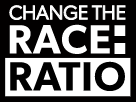When it comes to workplace teams, recent research tells us that diverse teams consistently outperform ‘homogenous' ones. Why? Well, it may be because when a group of people bring different perspectives, ideas, and opinions to the table, it enriches and boosts performance and innovation.[1]
It makes sense then that a diverse workforce offers organisations a competitive advantage; the potential to strengthen their brands and make their companies more attractive to high calibre staff. Which means that how effectively you capitalise on the advantages of a diverse workforce will be key when it comes to ensuring that you attract and retain diverse talent.
Making the most of diverse teams
Having a diverse workforce, however, is only the starting point for good organisational performance. The next question is how you capitalise on the diversity in your organisation.
In this article, authors Michael Puchalla, Moe Iwata and Dr Doyin Atewologun from consulting and coaching firm Delat Alpha Psi address some of these questions and offer practical tips on how to increase and improve communication, collaboration, knowledge and trust among diverse groups in the workplace. They also give examples of how a ‘positive interpersonal climate’ supports team members to feel comfortable taking ‘interpersonal risks’.
Let’s get started.
Interpersonal risk-taking: a definition
Every action that we perform in a place of work – from sending emails and attending meetings to presenting to a client or giving feedback – carries a certain ‘risk’ to our social and personal standing within our team.
This ‘interpersonal risk-taking’ is central to the way in which teams and organisations operate from day to day. But these everyday interactions do carry a certain amount of risk because they can trigger a fear of humiliation or rejection from our colleagues. Managing these interpersonal risks – which are subtle but powerful – is one of the fundamental challenges that organisations face. Research suggests that a climate of psychological safety can help.[2]
What is psychological safety?
Amy Edmondson, a Harvard Business School professor who coined the term, defines psychological safety as perceptions that we hold regarding the consequences of our interpersonal interactions. Specifically, she describes it as: “a shared belief that the team is safe for interpersonal risk-taking.” Where there is little psychological safety therefore, team members simply don’t feel comfortable taking interpersonal risks.[3]
At the very core of psychological safety is a sense of confidence that our voices are heard and valued at work. Once this sense of safety has been established, team members are more likely to speak up, ask questions, learn, contribute, and challenge others in a respectful manner because they don’t fear negative consequences. When there is psychological safety in a group, there’s also an established culture of trust, respect, inclusion, value and support for one another that reduces the fear of interpersonal risk.
The importance of psychological safety for diverse teams
Psychological safety has been shown to be crucial not just for boosting innovation and performance, but also for disrupting barriers to sustainable inclusive cultures.
The idea here is that, for all team members to function at their best and share their unique perspectives, they must work in an environment in which they feel safe taking interpersonal risks. For example, being able to ask questions such as: ‘Are there challenges here that we haven’t yet considered?’, can be the difference between project success or failure.
Creating a climate of safety in your team
So, how do leaders create an interpersonal climate of safety for their staff? Research shows that failing to manage psychological safety effectively can lead to differing levels of confidence among team members when it comes to taking interpersonal risks.
Being able to take these risks is especially important for those who belong to underrepresented groups or historically marginalised communities (e.g., women, LGBTQI+[4] and minority ethnic colleagues, disabled people and those from less privileged socio-economic backgrounds).
This is because, when working in environments that favour majority-status people (typically white, able-bodied, middle-aged, upper/middle-class men), members of marginalised groups can perceive themselves to be outsiders (or to be considered as such by their majority-status colleagues). So, their experience of bias and stereotyping in their work environments can prevent them from initiating or participating fully in activities that may carry interpersonal risk.
Psychological safety as a group phenomenon
We often see this play out in our signature Inclusion Ecosystem© approach when we’re delivering inclusive talent management programmes within organisations. Line-managers, senior leaders and underrepresented colleagues assess levels of psychological safety within their teams differently.
Minoritised people often report feeling uncomfortable about truly being themselves at work. They’re less likely to share their ideas or ask socially risky questions, compared to their majority-group colleagues.
This raises the important point that psychological safety is a group phenomenon. It’s an indication of the team culture and it’s not truly present if only a few team members feel it. Nurturing psychological safety in diverse teams is therefore crucial. It helps those in minority groups to feel they can engage in interpersonal risk-taking at work safely, without the fear of negative consequences.
Psychological safety for diverse teams?
Consistent evidence shows that when managers cultivate a psychologically safe environment, it’s beneficial for all team members, regardless of background[5]. Benefits include:
- An enhanced feeling of belonging and inclusion
- Unleashed creative thinking
- Strengthened organisational commitment and teamwork
- Improved contribution and knowledge as well as information-sharing
- Enhanced learning behaviour – e.g., critical thinking or problem-solving
- Enabled challenge to the status quo
These things all contribute to better performance and innovation.
Creating psychological safety in your team
Maintaining a psychologically safe work environment can mean reshaping the existing cultural norms at work. To make this happen, all team members need to be on board.
Managers have an especially important role to play because they can lead by example and hold others accountable for individual actions. Here are some evidence-based tips for inclusive practices that you can apply to create psychological safety within your teams:[6]
- Model vulnerability; frame mistakes as learning opportunities and present asking for help as a strength
- Be transparent and honest in your communications; share what you know and don't know, especially in times of uncertainty
- Build a culture of appreciation; show that respect and appreciation is encouraged
- Be clear on personal and organisational core values, share and act in alignment with them
- Frame differences as a source of value
Summary
Psychological safety helps to attract the very best diverse talent, is key to unlocking outstanding performance and innovation, and has the greatest impact of all when cultivated within diverse teams. Managers and senior leaders have a crucial role to play in creating these psychologically safe workspaces.
At Delta, we run public and company-specific workshops on Psychological Safety and Inclusive Leadership for mangers, team leaders, and senior executives. To learn more, contact us here.
About Delta Alpha Psi
Delta was founded in 2015 and is a firm of business psychologists and executive coaches. They develop successful leadership and inclusive change programmes that leverage the power of lived experiences, authentic connections across difference, and allyship for change, using evidence from behavioural science.
Delta’s expertise lies in helping leaders get the best out of diversity in their organisation. In their work with hundreds of managers across the globe, they hear first-hand about some of the challenges they face – such as how to prevent exclusion and encourage better performance within their teams.
In the past two years, Delta has worked with over 5,500 organisational leaders, senior managers and minoritised professionals across a variety of sectors and industries, to increase will, develop skill and embed change, for inclusion.
Article authors: Michael Puchalla, Moe Iwata and Dr Doyin Atewologun
References
1. Henrik Bresman and Amy C. Edmondson, “Exploring the Relationship between Team Diversity, Psychological Safety and Team Performance: Evidence from Pharmaceutical Drug Development”, Harvard Business Review (2022): 1-11.
2. Amy C. Edmondson and Zhike Lei, Psychological Safety: The History, Renaissance, and Future of an Interpersonal Construct, Annual Review of Organizational Psychology and Organizational Behavior 1, no 1 (2014): 23-43.
3. Alexander Newman, Ross Donohue, and Nathan Eva, Psychological safety: A systematic review of the literature, Human Resource Management Review 27, no 3 (2017), 521-535.
4. Lesbian, Gay, Bisexual, Transgender, Queer, Intersex and Others
5. Amy C. Edmondson, The Fearless Organization: Creating Psychological Safety in the Workplace for Learning, Innovation, and Growth, Wiley (2018).
6 See note 5 above



